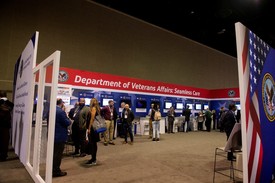
VA is constantly enhancing the ways it can improve Veteran care. An important part of that growth is engaging directly with the greater healthcare community to share ideas, innovations, and best practices. With that in mind, VA employees attended the 2022 HIMSS Global Health Conference & Exhibition, or HIMSS22, held on March 15, 2022, at the Orange County Convention Center in Orange County, FL.
Team members from the Simulation Learning, Evaluation, Assessment and Research Network (SimLEARN), Emerging Healthcare Technology Integration (EHTI), and other organizations within the Office of Healthcare Innovation and Learning (OHIL) attended HIMSS22 to expose Veterans as well as current and potential collaborators to the innovative initiatives happening at VHA. Discover on VAntage Point how collaborations and connections, such as those made at HIMSS, are instrumental in SimLEARN and VA’s ability to improve Veteran care.
|
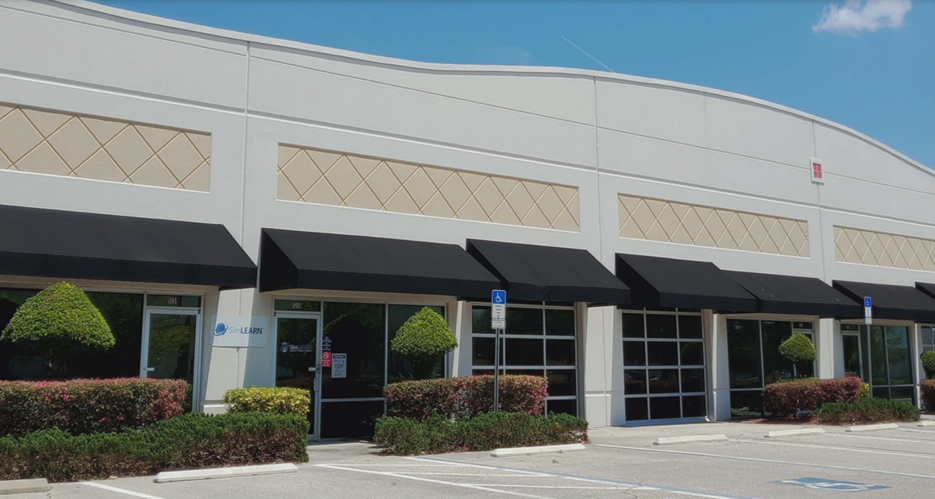
(SimLEARN Hazeltine facility in Orlando, FL. Photography by Desiree Caldwell, MSHA)
By Desiree Caldwell, MSHA, Facility Manager at SimLEARN Hazeltine
For the first time in more than a decade, all SimLEARN staff along with equipment, programs, and trainings will operate under one roof. This move comes as the simulation network prepares to bid farewell to its Hazeltine facility, located at 6490 Hazeltine National Drive in Orlando, FL. It will be decommissioned as of November 30, 2022. The SimLEARN Hazeltine facility housed the Resuscitation, Education, and Innovation (REdI) portfolio and other programs. A wide range of staff have worked at the facility since it was established in February 2011 to ensure the efficient and effective dissemination of national simulation training and education programs throughout VHA.
The National Simulation Center (NSC), which was established in Lake Nona, FL on the campus of the Orlando VA Health Care System in 2016, will soon act as home to the entire SimLEARN organization. The facility houses 51,000 usable square foot with a 2,000 square foot warehouse. This transition will allow SimLEARN to collaborate out of one central location to support the development and distribution of simulation and education in health care trainings across VHA, and in turn improve health care outcomes for our nation’s Veterans.

Intensive Care Simulation Room at the National Simulation Center. Photograph provided by SimLEARN staff
By Dr. Irene Silvernail DAOM, MSN, RN-AHN, Director of Registered Nurse Transition-to-Practice Residency Program at the South Texas Veteran Healthcare System
New graduate nurses often report feeling an overwhelming lack of confidence in making sound clinical decisions when caring for Veterans. They often make comments, such as, “I have no experience because half of my education has been online.” Due to effects of the COVID-19 pandemic, many new graduates are entering the nursing profession with less-than-optimal hands-on experience. Simulation trainings serve as a bridge for new graduates to gain confidence while enhancing their skills.
In 2020, the South Texas RN Transition-to-Practice (RNTTP) program advisory board determined there was a need to include simulation in the curriculum. The South Texas Simulation Center collaborated with the RNTTP program to develop an assessment and training plan that would meet the needs of new nurse graduates. View the full article to see how their plan moved the program from no simulation sessions to 34% of all training time in simulation.
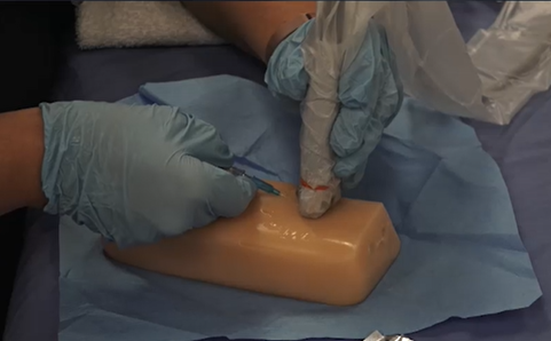
Good patient outcomes require clinicians to have accurate and timely vascular access to add or remove chemicals in the bloodstream. However, dehydration creates significant challenges to IV insertion because the veins are more difficult to access. This has been a problem due to the new onslaught of pandemic-related populations. Nurses require additional options for performing one of the most common procedures in daily clinical practice, the insertion of intravenous (IV) catheters.
An ultrasound machine can be used to identify subtle differences in blood vessels. Teaching clinicians to use ultrasound for guidance during peripheral IV insertion (UGPIV) can significantly impact patient care and outcomes by reducing the number of insertion attempts, thus speeding the delivery process, and reducing opportunities for trauma or infection. UGPIV requires specific training, simulation, practice, and ongoing mentorship. Each VHA facility has access to the training through SimLEARN Innovation Center for Education (SLICE) course offerings.
|
By Tracey Robilotto DNP, APRN, CNS-BC, Associate Director Resuscitation Education and Innovation (REdI) | SimLEARN Orlando, FL
In response to VHA Directive 1177 and requests from the field, Resuscitation Education and Innovation (REdI) developed a standardized mock code training program to assist facilities in either standing up a new program or identifying areas to improve their current program. The program was first implemented as a three-day face-to-face training in 2019. Implementation came to a halt in 2020 with a travel moratorium during the COVID pandemic. Unable to travel to provide training, REdI went back to the drawing board to reinvent the curriculum into a hybrid approach.
The new curriculum consists of asynchronous pre-course training on the SimLEARN Virtual Academy (SVA), a virtual day one training, and a face-to-face day two training held 90-120 days after the day one implementation. The pre-course work delivers the Simulation Foundations training, so all participants come to the first day of training prepared to begin mock code training. The first day of training emphasizes making mock code events meaningful; asking the question: why are we disrupting Veteran care?
Resident makes critical decisions regarding diagnosis and treatment within a safe environment in the simulation center under the guidance of instructor Dr. Edwin Avallone. Photography by Bonnie Barti
By: Bonnie Barti, MAed, Simulation Technician | VA Southern Nevada Hospital
VA Southern Nevada Hospital is incorporating the healthcare simulation standards of best practices via interdisciplinary simulation scenarios as outlined in the updated standards from the International Nursing Association for Clinical Simulation and Learning. The simulation center designs and completes simulations to advance the science of simulation, share best practices, and provide evidence-based guidelines for the practice and development of comprehensive standards of practice. The process has incorporated Simulation-enhanced Interprofessional Education (Sim-IPE) which enables learners from different professions to engage in a simulation-based experience to achieve linked or shared objectives and outcomes.
By creating this type of scenario, the team can cooperate, communicate, and exchange information with each other during the simulation. Sim-IPE is the overlap of the pedagogy of simulation and interprofessional education (IPE), providing a collaborative approach for the development and mastery of interprofessional practice competencies. The impact of this type of training will reap larger benefits to crisis resource management and patient care for our Veterans.
See examples of the residents’ work and read more about how interdisciplinary simulation training can improve Veteran care.
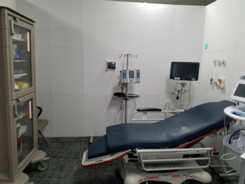
Pre-construction simulation can be useful in identifying latent patient or staff threats and determining if any needs are not met in the original design. This allows for minor changes to occur before construction is complete, improving the overall safety and efficiency of the space for both Veterans and staff. In March 2022, the Kansas City VA Medical Center (KCVA), utilized this concept for the Emergency Department (ED) patient check-in, waiting room, and triage areas. During pre-construction meetings, concerns arose regarding patient flow and staff safety in the new space. The KCVA simulation team worked with the ED key stakeholders to construct a replica of the triage space to conduct simulations to test these concerns.
Simulations were conducted with staff in the area to test the identified concerns. Following each scenario, a team discussion was conducted, and a safe patient flow process was established. Key stakeholder concerns centered around patient and staff safety. Concerns identified included lack of a clear view of the waiting room from the triage rooms and having only one entrance and exit from the triage room. Since construction has already begun on this phase of the ED, no major changes can be made, but the feedback was noted for future phases. The team discussion also led to identifying measures to increase staff safety when using the triage rooms.
Visit SimLEARN’s website to learn more about how pre-construction simulation offers the opportunity for spaces to become safer and more efficient while staying focused on the mission of improving the lives of Veterans and their families every day.
|
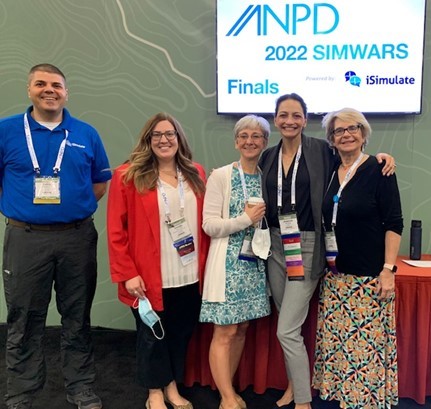
By Mary E. Holtschneider, MEd, MPA, BSN, RN, NPDA-BC, NREMT-P, CPTD, Co-Director | Interprofessional Advanced Fellowship in Clinical Simulation
SimWars is a national simulation competition for emergency medicine residents. It is a simulation-based competition between teams of clinical providers that compete in various aspects of patient care in front of an audience. The Association for Nursing Professional Development (ANPD), which serves as the professional association for Nursing Professional Development (NPD) practitioners adapted its own version of SimWars after simulation educators, both in academia and in clinical practice settings, identified the need for ongoing debriefing skills development as simulation modalities continue to expand. In 2021 and 2022 they partnered with both iSimulate and the Durham, North Carolina VA Health Care System Simulation Program to create its own SimWars competition for members to further develop and demonstrate their debriefing skills.
ANPD SimWars requires significant planning and implementation through an interprofessional team effort to provide the optimal experience for contestants. Discover how team members pulled this off and read about the skills contestants took away from the experience.
|
|